How to Get Started With Automated HR Workflows

Did you know? The cost for an administrator to enter new employee information manually is $48 per new hire! (Ernst & Young)
"If we look at the past few years of data, we find the projects delivering the greatest ROI are those that automate payroll, core HR, and time and attendance functions." (Rebecca Wetteman, HR Executive)
More than half of office workers spend more time searching for documents than on work. (N.F. Mendoza, Tech Republic)
Cloud-based HR systems deliver 3.2 times the ROI of on-premise ones. (Rebecca Wetteman, HR Executive)
Did you know that at least 80% of HR processes could be automated? The transactional nature of HR makes it ideal for automation. And it’s impossible to overstate the benefits automation brings.
First off, letting tech manage repetitive tasks saves you time and money. Secondly, it lowers your risk of a compliance violation. In addition, HR tech provides employee self-service. Your employees want to manage their data with an easy HR app. And frankly, they are better at it. Lastly, HR automation makes work more enjoyable for business owners and HR pros.
HR Work Tech is Affordable
If you are still using paper and spreadsheets, what’s stopping you from innovating? If you think it’s too expensive, think again. Cloud-based small business software has never been more affordable. There are systems as powerful as custom on-premise software at a fraction of the cost. For example, some all-in-one HR systems cost less than $8 per employee per month. And, unlike custom systems, there isn’t a large upfront investment. Even better, they pay for themselves almost immediately. Certainly, the cost of software is no longer a barrier for small businesses.
Check out our Hiring and Time & Labor ROI calculators to find out how much your HR department can save.
What are some specific automated HR workflows?
There is software for all HR processes–whether you perform the task once a day or once a month. Let’s discuss specific automated HR workflows.
Job Candidate Emails
Keeping candidates updated on their status is critical. But extremely time-consuming. No HR team wants to ghost candidates. If you’re doing high-volume hiring, however, it’s nearly impossible to keep up. An applicant tracking system (ATS) is a specific type of HR software that automates a host of recruitment processes. ATS email triggers automate candidate updates, for example.
This is the basic process:
- Build your hiring workflow using hiring stages (applicant status): Application Received, Do Not Pursue, Schedule Interview, Interview Confirmed, Make Offer, Background Check, etc.
- Create an email template for each stage (these can vary by job title or other criteria)
- Enter merge fields in the templates to personalize the message with the candidate’s name, address and the job title
As you move the candidate through the various stages of the hiring process, each stage change will trigger an email. For example, “We’ve received your application,” “We would like to schedule an interview,” or “We have chosen another candidate but thank you for applying.”
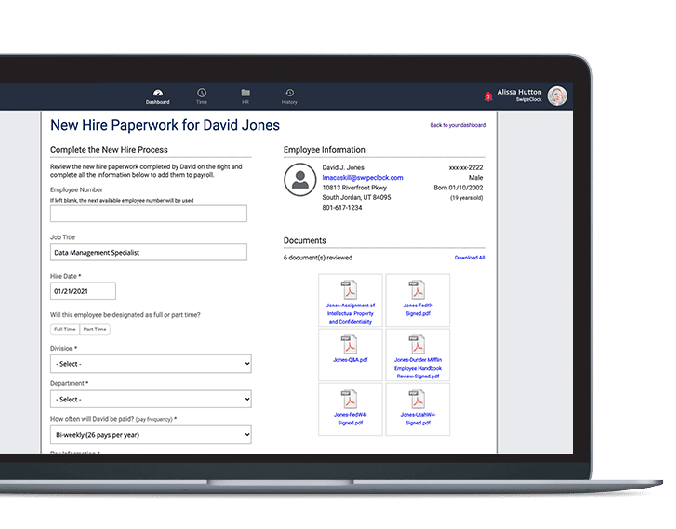
Employee Onboarding
Certainly, every HR pro knows that the onboarding process is tedious and time-consuming. An automated HR workflow for onboarding uses a digital portal. New hires can complete their paperwork electronically on any internet-connected device. This is especially useful for remote onboarding.
This is how it works: The software prompts the employee with questions, fills in the forms, and lets them e-sign. WorkforceHub onboarding, for example, organizes onboarding in three parts:
- Setup: the administrator enters the new employee’s demographic information and selects the documents and questionnaires they need to fill out.
- Employee completion: the employee reviews and completes their paperwork.
- HR staff review: the admin reviews the documents, completes the I-9, and registers the employee in the payroll system.
Are you onboarding newly hired employees remotely? If so, get our free eBook: How to Quickly and Remotely Onboard Employees Post-Pandemic.
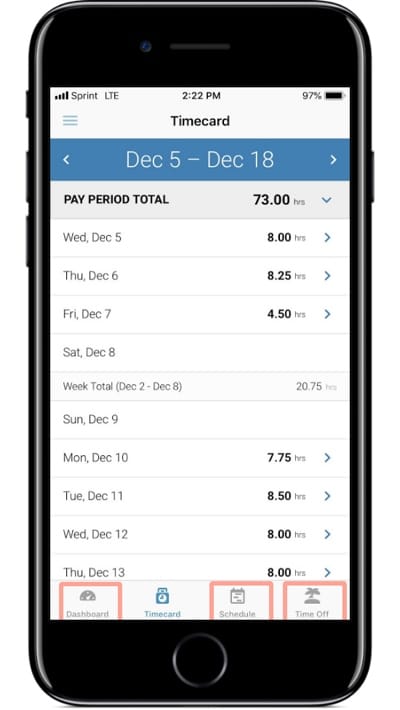
Employee Timesheets
Time and attendance is an essential HR function. Without it, you can’t pay your employees. It is also prime for automation. With an automated time and attendance system, employees punch in for shifts with a web-based app or synced hardware clock (more on clocks below). The software creates virtual timecards and tracks hours as employees work their shifts. The software can send an alert if the employee forgets to punch in or out.
At the end of the pay period, the employee reviews their virtual timecard. They can enter any missing punches if needed. When satisfied that all is in order, they submit it to their manager with a click.
Managers can see all of their teams’ timesheets in a centralized location and approve in bulk or by exception (if a timesheet has a problem). Then, the payroll manager imports the hours data directly into the payroll system to cut paychecks.
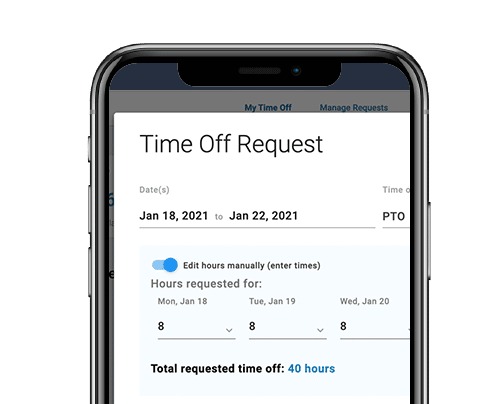
PTO Management
Good leave management improves engagement and shift planning. Poor leave management can put you at risk of a compliance issue. Unfortunately, a process that was never simple has gotten even more difficult. Companies must comply with state and federal family leave laws, COVID-related leave and state PTO regulations.
There is software for this as well. Leave management apps easily track complex accruals policies, family leave and COVID-related leave separately and accurately.
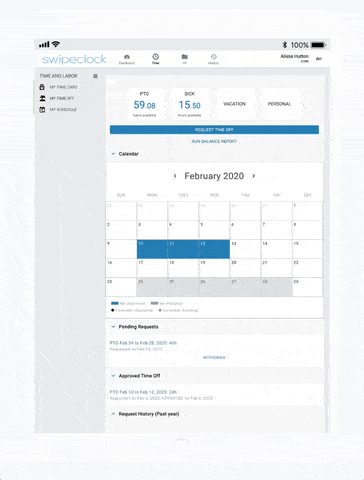
PTO trackers make life easier for everyone: employees, managers and administrators. The employee requests leave in the system (on a mobile device from anywhere, if desired). The manager sees all requests in schedule context and can approve, deny or modify requests. Having all requests in one place helps the manager treat all employees fairly when it comes to vacations. No more forgotten PTO requests and unhappy employees.
Simplify FMLA
HR tech streamlines FMLA as well. Employees notify managers of family leave in the software. Managers submit the information to HR. The software communicates with the payroll system so any type of leave–paid or unpaid–is reflected accurately in the payroll system. And, finally, the system keeps audit-ready records that can protect employers in case of an FMLA investigation.
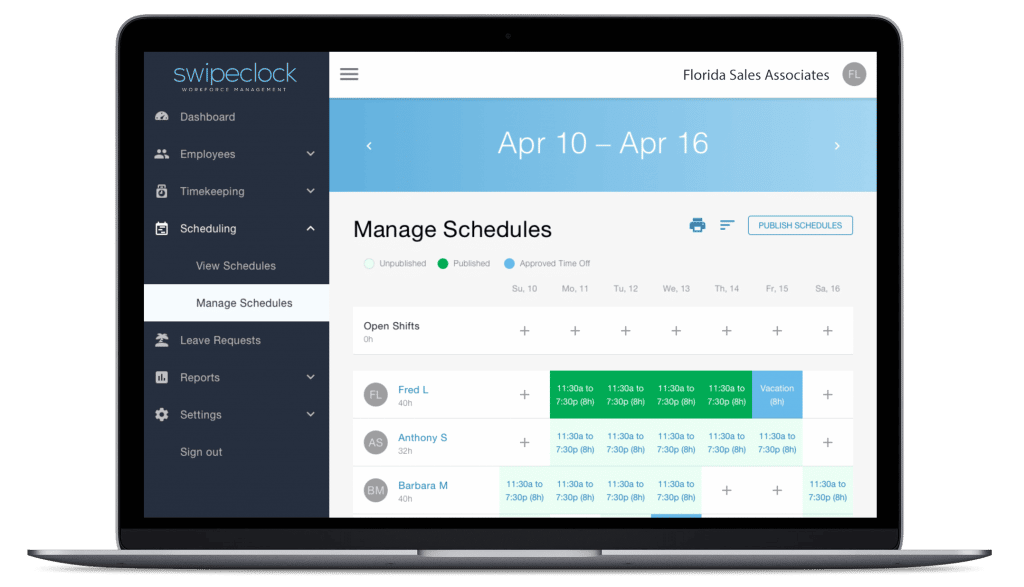
Employee Scheduling
Employee scheduling can be organized into several automated HR workflows. Scheduling software has a graphical interface, templates and replication tools. Using the software is as easy as dragging and dropping employees into shifts. You can create standard schedules and tweak as needed for varying demand or multiple locations. Track employee availability, certification expiration and schedule preferences.
What if you need to fill a shift at the last minute? With scheduling automation, the manager can pull up a dynamic list of qualified employees to fill a shift when a co-worker calls out. Set business rules such as no overtime, required skills or employee preferences. System also have shift trade boards that allow teams to take on much of the burden of shift trading.
Scheduling automation increases productivity and ensures you have enough employees on the job. In addition, it helps supervisors spend less time on manual tasks and more time supporting their teams
Performance Appraisals
Performance management doesn’t need to be a time-consuming process. Create digital performance review surveys with rated questions and description fields. Let employees and managers complete the reviews online and attach documents. Accelerate individual and business success with a structured process.
General Automated HR Workflows
Large or small, Human Resources systems allow you to create custom workflows for your company’s processes. A workflow can be created for one employee, a group of employees, or your entire staff.
Examples:
- Employee address verification
- Company handbook acknowledgement
- Benefits election
- Employee change of status
- Offboarding
- Payroll change approvals
Once a workflow is created, the software sends a notification to the employee alerting them that they have a task. Admins can see the status and receive notifications themselves if the task requires their approval or input.
Hardware Time Clock Integration
Many businesses use physical time clocks for employees to punch in for shifts. There are many benefits of HR software that can integrated with time clocks. As employees punch in and out, the time clock sends the information to the timekeeping module in the HR system. If you are researching systems, consider the advantages of time clock integration. Be aware, however, that WorkforceHub from Swipeclock is one of the few HRMS that integrates with physical clocks.
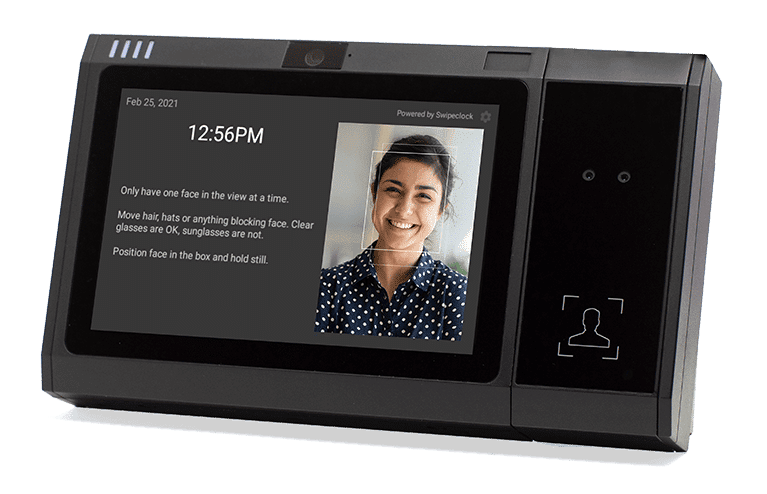
How do I choose HR software for workflow automation?
Thus far, we’ve discussed HR software in the context of specific workflows. Although you can buy separate products for each function, it makes more sense to get a system that handles everything you need. Disparate systems are more expensive and less efficient.
HRMS vs HRIS vs HCM vs HRM
In the HR software market, the most common all-in-one systems are:
- HRMS-Human Resource Management System
- HRIS-Human Resource Information System
- HCM-Human Capital Management
- HRM-Human Resources Management
All of these are integrated suites of modules. There is a lot of overlap, but in general, here are the nuances:
HRIS tends to focus on information instead of business processes. Some HRIS don’t include time and attendance or scheduling.
HCM are generally designed for enterprise companies. HCMs often include things that aren’t applicable to small and mid-sized organizations.
HRM puts the focus on Human Resources management to the exclusion of information processing.
HRIS, HCM, and HRM all lack essential components for small business HR.
An HRMS is the Comprehensive Solution for Small Business
If you’re considering your first system, we recommend an HRMS. It has everything you need without bells and whistles you don’t.
How can automated HR workflows with an HRMS help your business?
- Increase productivity due to centralized data visibility and real-time updates
- Improve business decisions with analytics and reporting
- Elevate employee engagement with self-service and the advanced tech they expect
- Eliminate the costs of printing and paper-based file storage
- Decrease compliance risks with checklists, built-in compliance tools, reduced human error and improved data security
- Scale quicker by reducing cost-per-hire and time-to-hire
An HRMS includes:
- Applicant Tracking
- Employee Onboarding
- Benefits Enrollment
- Time and Attendance, Scheduling
- PTO Management
- Performance Management
- Analytics and Reporting
For more guidance on choosing HR software, see How do I Choose Workforce Planning Software for Small Business.
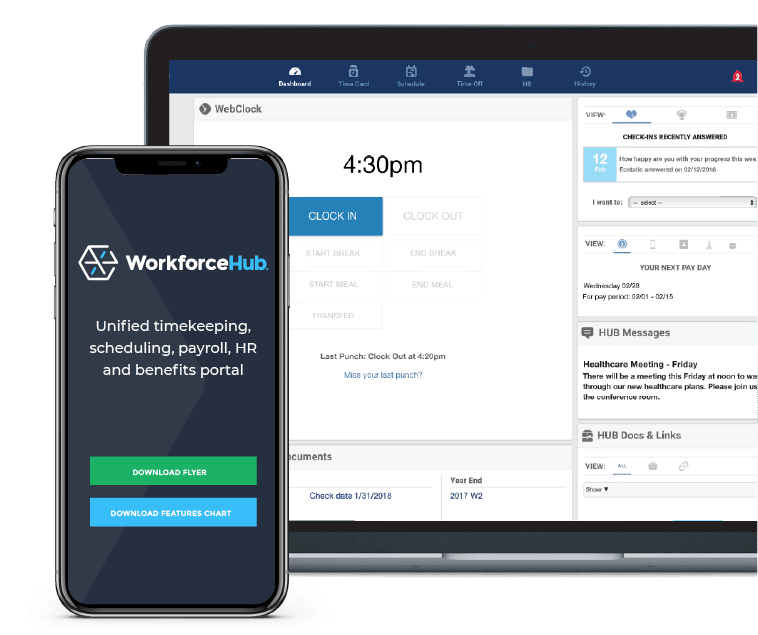
Still using spreadsheets? See our infographic 7 Ways Spreadsheets are Sabotaging Your Business and learn why your team deserves automated HR workflows.
Don’t Let Your Business Fall Behind
If you don’t automate and streamline administrative tasks, it will be difficult to compete in today’s marketplace. Small businesses in all market sectors are adopting HR software at an increasing pace. In addition to losing the competitive edge, consider the opportunity costs of postponing automation. If your working hours are consumed by manual processes, you have little time for strategic initiatives that could help your pandemic-fatigued workforce. For example, employee assistance programs (EAPs), re-targeting training and development, increasing diversity and inclusion, and improving benefits education. These efforts could have a long-term impact on employee retention, engagement and your overall employer brand.
“HR managers who do not fully automate say they lose an average of 14 hours a week manually completing tasks that could be automated; more than a quarter (28 percent) waste 20 hours or more, and 1 in 10 (11 percent) spend 30 hours or more.” Career Builder
Would you like a demo of the top HRMS designed and priced for small businesses? Visit WorkforceHub and scroll down for the demo request form.
Sources
- Rebecca Wetteman, “Measuring the ROI of Tech,” HR Executive, February 13, 2019
- Estimating Labor and Non-Labor Costs Associated with Common Human Resources (HR) Functions/Tasks Cost Update 2019, Ernst & Young
- N.F. Mendoza, “More Than 50% of Office Pros Spend More Time Searching for Files Than on Work,” Tech Republic, May 18, 2021
- “More Than Half of HR Managers Say Artificial Intelligence Will Become a Regular Part of HR in Next 5 Years,” Career Builder, May 18, 2017
Simplify HR management today.
Simplify HR management today.
Navigating the Complexities of Healthcare Recruitment
The healthcare sector is renowned for its rewarding nature, offering professionals the chance to significantly impact individuals’ lives by aiding in their recovery from various ailments and conditions. However, for those tasked with recruitment within this sector, the challenges are plentiful. Delve into our in-depth guide for an array of strategies to elevate your healthcare…
Read MoreThe Importance of Facial Recognition Time Clocks for Small Businesses
Updated April 17, 2024 A facial recognition time clock is no longer a luxury. Advanced biometric clocks are a must-have for today’s workplaces. A facial recognition time clock is the best technology for tracking employee time. It solves a multitude of problems employers are facing with their workforces. What is a Facial Recognition Time Clock?…
Read More





